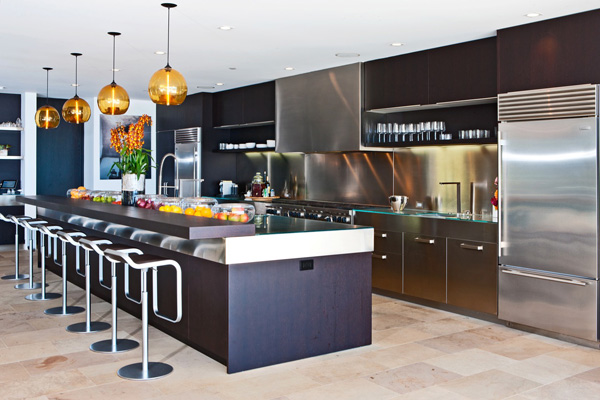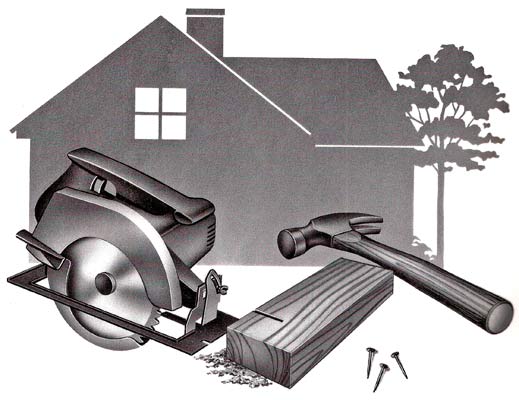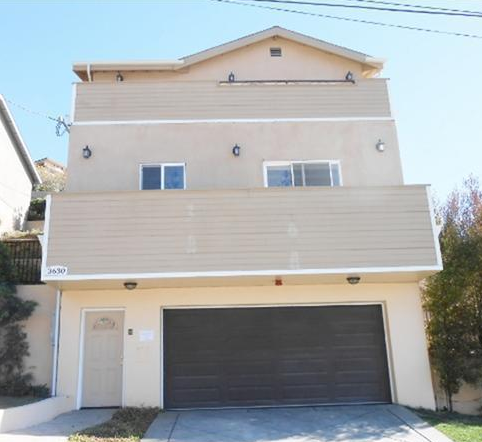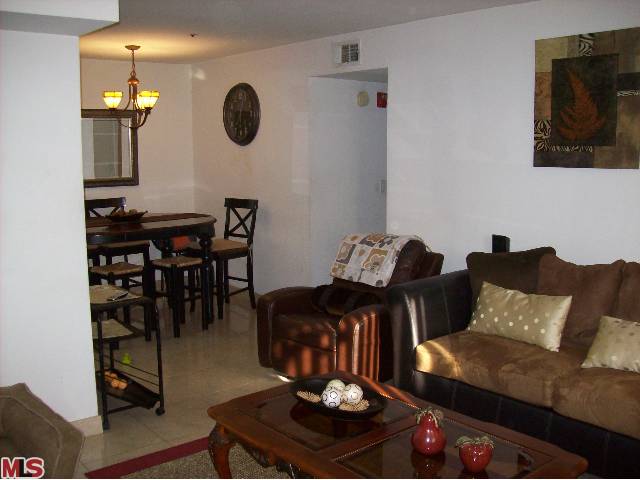
BLOG
The American Dream of Homeownership!
In addition, owning your own home provides a sense of security and well-being that's hard to beat. Home is where we raise our families, have friends over for summer barbeques, paint the baby's room pink or blue, and find refuge from the outside world.
Owning a home offers other advantages as well. For instance, as a homeowner, you have control over your environment. Not only can you change your home to meet your needs, but you also aren't subject to the terms of a lease or a landlord. As a homeowner, you can experience the emotional and financial security that comes from knowing what your housing expenses will be from year to year. Unlike rents, which can increase annually, most mortgages have fixed or capped monthly payments. So, as a homeowner, you can have a much better idea of what proportion of your paycheck goes toward your home. Think of it as the ultimate savings plan.
And it only gets better. Homeownership is the primary component in the creation of wealth for many Americans. Data from Harvard University's Joint Center of Housing Studies illustrate not only that the median net wealth of homeowners is 34 times greater than that of renters, but also that over half of that wealth is generated from home equity. As you pay down your loan amount each month, you accumulate equity, a growing ownership interest in your property. If you need funds, you can borrow against this equity in the form of a home equity loan. Further, interest on a portion of home equity is tax-deductible.
Most homes appreciate in value over time and can be a source of income for you, especially if you've lived in your house for many years. When you retire, you can sell your home if you need the funds or make use of a home equity conversion mortgage.
Finally, don't forget about the significant tax advantages of owning your home. Interest on a home mortgage and property taxes are deductible. For most of us, mortgage interest provides the largest tax deduction. Also, a home is the single most important factor that determines whether you will be able to file a return which takes advantage of the wide range of allowable itemized deductions.
Homebuying Means Getting Back To The Basics
Recently, the CALIFORNIA ASSOCIATION OF REALTORS® surveyed homebuyers to find out what they considered to be important in the purchase of their homes. The largest percentage, 27 percent, considered the mere ownership of a home as the most important reason to buy. Moving to a better neighborhood (17 percent), wanting a larger home (10 percent), and realizing the tax advantages of homeownership (8 percent) were other reasons cited for buying homes. Seven percent focused on investment value as their primary motivation for homeownership.
Over the years, your home likely will be the best investment you'll ever make. But more importantly, it will be the place that offers you and your family shelter, security and stability. That's some return on investment.
Ginormous Kitchens: Are They Really a Good Choice?
Huge, open kitchens continue to grow in popularity, getting bigger and bigger. But is bigger really better? Houses with cozy eat-in kitchens are common. But enormous kitchens that consume most of a home’s square footage continue to be the trend.
High-end kitchens can top 3,000 sq. ft. and are becoming more and more popular. Even kitchens in mid-level housing are ballooning, swallowing dining rooms, living rooms, even garages.
Here’s the punch line (courtesy of the Wall Street Journal): Many home owners with ginormous kitchens don’t actually cook in them.
Instead they buy ready-made food to eat at home, and use the kitchen for socializing as friends gather and prepare food together.
Some even have smaller kitchens tucked away. These secondary kitchens, often called “wok kitchens,” hide the mess and smells of meal preparation, while creating the illusion of food being prepared in its larger counterpart.
So what’s the point?
Although, I confess, I completely understand large-kitchen lust.
When we designed our Virginia house 15 years ago, our son was a baby and I couldn’t envision him ever growing up. I wanted a space where I could keep an eye on him while I cooked. So we built a 500 sq. ft. kitchen with space for cooking, eating, lounging by the fire, and watching TV.
And it has its advantages:
- The space is an open, delightful place where I cook, work, watch birds at the window — feeder, and feel embraced by a flickering fireplace.
- The baby survived while I cooked, paid bills, attempted to write.
But the list of cons is much longer:
- Noise: It’s impossible to talk on the phone while someone is watching TV, and our 15-year-old dishwasher is running.
- Mess: When I entertain, piles of dirty dishes and utensils attend the party with us. So, I only invite good friends who love my mess and me anyway.
- Diet: It’s hard to fight fat when you work three steps away from the fridge.
- Temperature control: The room is always drafty and hard to heat without the gas fireplace going.
- Family dinners: Rarely do we eat a family meal without the TV blaring some must-see ballgame.
- Unused space: My adjacent dining and living rooms are obsolete dust collectors. I can’t pay guests to take coffee there.
- Teenagers: The baby is now 16, and would rather eat nails than spend time with Mom, no matter how big the space.
So how big is too big? What’s the “just-right” size?
- Published: December 03, 2012
- By: Lisa Kaplan Gordon
 Big kitchens are on trend — but home owners often use them as gathering spaces, not necessarily to cook in. Image: Burdge & Associates Architects Inc.
Big kitchens are on trend — but home owners often use them as gathering spaces, not necessarily to cook in. Image: Burdge & Associates Architects Inc.
FHA Loan Limits in Los Angeles County
Thinking of buying a home and going with an FHA loan? Here are the FHA loan limits for Los Angeles County of California. For information on other states, please feel fee to contact me at Laura.A.Key@gmail.com LOS ANGELES COUNTY FHA LOAN LIMITS (Median Sales Price $535,000)
- Single Family $729,750
- Two Family $934,200
- Three Family $1,129,250
- Four Family $1,1403,400
FHA loans have been helping people become homeowners since 1934. How do we do it? The Federal Housing Administration (FHA) - which is part of HUD - insures the loan, so your lender can offer you a better deal.
- Low down payments
- Low closing costs
- Easy credit qualifying
What does FHA have for you?
Buying your first home? FHA might be just what you need. Your down payment can be as low as 3.5% of the purchase price, and most of your closing costs and fees can be included in the loan. Available on 1-4 unit properties.
Want a fixer-upper? FHA has a loan that allows you to buy a home, fix it up, and include all the costs in one loan. Or, if you own a home that you want to re-model or repair, you can refinance what you owe and add the cost of repairs - all in one loan.
Financial help for seniors Are you 62 or older? Do you live in your home? Do you own it outright or have a low loan balance? If you can answer "yes" to all of these questions, then the FHA Reverse Mortgage might be right for you. It lets you convert a portion of your equity into cash.
Want to make your home more energy efficient? You can include the costs of energy improvements into an FHA Energy-Efficient Mortgage.
How about manufactured housing and mobile homes? Yes, FHA has financing for mobile homes and factory-built housing. We have two loan products - one for those who own the land that the home is on and another for mobile homes that are - or will be - located in mobile home parks.
Ask an FHA lender to tell you more about FHA loan products.
Credit Info - Are You Able to Purchase a New Home?
For many homebuyers, credit is a big consideration in the buying process. In applying for a mortgage, your credit may be the single factor that opens or closes the door to purchasing the home you want at a low interest rate. You may believe you have a strong credit rating but have never actually seen your credit report. Or perhaps you're concerned that past credit problems will come back to haunt you as you apply for a mortgage Whichever boat you're in, the first step is the same: Obtain a copy of your credit report for a small fee and review it for accuracy. Credit reports are maintained by three credit reporting agencies: Experian,TransUnion and Equifax. It's a good idea to obtain your credit report from all three agencies, since each may contain different information and you don't know which agency will be supplying your report to your lender.
If there is incorrect or missing information that would improve your credit score, report it to the credit bureau. Under the Fair Credit Reporting Act, consumers have the right to review and contest information in their credit reports. Even if your credit report reads exactly like you expected and your credit is in fine shape, going into the mortgage application procedure with peace of mind is worth the nominal fee.
What is credit?
Credit is a record of a person's debts and payment history. Credit bureaus compile individual reports of consumer debt through an array of sources, including credit card companies, banks, the IRS, department stores and gasoline companies, and any other entities granting loans. A credit report is a résumé of your financial performance, with information on your payment standing for all the accounts you've held for the past seven to 10 years (seven years for accounts not paid as agreed and 10 years for accounts paid as agreed).
What is a credit score?
Credit scores, also called "beacon scores," are composites that indicate how likely you are to pay on a loan or credit card as agreed based upon your payment history, amount of debts, length of credit history and types of credit in use. The credit grantor reviewing your loan application compiles your score based on information from your credit report and other data, including your income level.
Fair, Isaac and Company (FICO) developed the mathematical formula for establishing scores. Scores range from 300 (poor) to 850 (excellent), and the rule of thumb is the higher the score, the lower the risk to lenders.
In the past, consumers have not been allowed to view their credit score or be informed of the factors that determined their scores. However, C.A.R.-sponsored SB 1607, signed by California Gov. Gray Davis on Oct. 2, 2000, granted California homebuyers access to their credit scores and pertinent information about what factors determined their scores. The legislation, which becomes effective July 1, 2001, also allows consumers to receive their credit scores when they request copies of their credit files for a nominal fee.
What role does credit play?
Lenders review credit reports to determine debts owed and if they are repaid according to the terms of the initial contract. If you have any outstanding debt, lenders will analyze your debt-to-income ratio and how that debt will factor into your ability to make your mortgage payments.
What do I do when I get my report?
Read through it carefully, paying extra attention to the section on your account payment history.
How do I establish credit?
If you have never taken out a credit card or borrowed money from a financial institution, or if your accounts are young, you can establish credit history by having your rent payments to landlords and monthly payments to utility companies added to your credit report. Credit can also be established by paying off a car, if it’s financed of course.
How do I re-establish good credit?
If your credit report contains negative information, such as frequent late payments, repossessions, collection activity or bankruptcy, you may want to wait to apply until after you've improved your credit record. Rebuild your credit by showing strong payment history in the years following any problems. Most lenders prefer for three years to have passed since a foreclosure on a mortgage and at least two years since bankruptcy. Lenders are willing to forgive past black marks on a credit report if you establish a pattern of responsible debt repayment.
How do I correct a mistake?
Follow the directions of the credit bureau issuing your report. The bureau will contact the source of the information in question and attempt to resolve the dispute. Also, if late payment information is accurate but you have a good explanation (e.g., you were laid off from work or became very ill), you are allowed to add that information to your report.
Source: CAR (California Association of Realtors)
www.KeyCaliforniaHomes.com
Laura.A.Key@gmail.com
Remodeling’s ‘Value’ on the Upswing
Now that the housing market is back, home improvements are, too. And they’re paying off better than in years past. 2013 is shaping up pretty sweetly for home owners.
First, there were the home owner-centric tax benefits (energy tax credits, PMI deduction,mortgage debt forgiveness) that Congress and the President extended through 2013; and now, we’re seeing that our home improvement dollars are working harder.
After several bruising years, spending on remodeling projects is up and so too is your return on your remodeling dollars. The national average percentage recoup on all 35 projects in Remodeling Magazine’s 2013 Cost vs. Value Report rose since last year.
What a different story from 2012, when the ROI dropped in all but three categories.
The annual report is based on a survey that asks REALTORS® around the country to estimate what specific projects, from adding an attic bedroom to installing new windows, would recoup in their market at resale under current conditions.
Of course, what you recoup depends on the specifics of your project, your market, and when you sell. But the report offers a great bird's-eye view of project costs and returns.
So which projects offer the best value for the money?
Exterior projects like siding, window, and garage door replacements took seven of the top 10 spots in this year’s list.
Makes sense since REALTORS® always say curb appeal is half the battle when you’re trying to sell.
Although it’s not in the top 10, I was gratified to see that the backup generator project is up about 5 percentage points since 2012. One of our bloggers, Lisa Kaplan Gordon, invested in a portable generator last year after one too many storms and power outages, and despite the learning curve, she was glad she did. She had power when a lot of her neighbors didn’t; she even shared power.
Indoors, the top-10 projects include a minor kitchen remodel (involving cabinet refacingand new countertops and appliances), which recouped 75.4% nationally.
Kitchen redo aside, replacement projects, such as installing an entry door or new siding,tend to have a higher cost-to-value ratio than remodeling projects. But now that housing has turned a corner, home owners are stepping up their remodeling plans.
Harvard’s Joint Center for Housing Studies saw 9% growth in remodeling in 2012 and predicts that trend will continue as more and more distressed properties are bought and rehabbed.
The housing group says interest in energy-efficiency updates will keep on trucking, too. It’s the one area where spending on remodeling projects rose during the recession.
I’m betting the revived energy tax credit will add fuel to that trend.
By: Christina Hoffmann Published: January 24, 2013
www.KeyCaliforniaHomes.com • Laura.A.Key@gmail.com
Are Your Neighbors Friend or Foe?
Neighbors wage war every day over blocked views, loud noise, big and small annoyances. Do you have a good neighbor policy? How’s it working out? File this under No Good Deed Goes Unpunished: A Buffalo home owner sued her neighbors for cleaning up her littered patio without her permission. She said they trespassed and discriminated against her. A federal judge disagreed, and forced her to pay $107,000 in attorney fees.
Think I’ll skip that neighborhood’s next block party.
I’ve been a home owner for 27 years and can think of no greater hell than waging war with neighbors. The idea of scurrying to collect my mail so I’ll avoid an angry couple next door makes me want to down a Xanax.
So what do I do? I usually bend over backwards to keep the peace.
Once, I hacked off the tops of my sunflowers because my neighbor complained they blocked the sun from shining on her tomatoes.
For the past two summers, I’ve allowed a twangy lute to drown out summer crickets because another neighbor adds a mid-eastern soundtrack to his nightly pool parties.
And I let it go when the couple across the street snuck into my yard and pruned my willow because they thought it blocked traffic sight lines around the corner.
But I may be in the minority. These days, it seems like neighbor feuds are the rule, not the exception.
- Former Seattle Mariners first basemen John Olerud finally won a long, unhappy battle with the minister next door to remove a Chinese pine that obstructed Olerud’s lake and mountain views. The neighbors had been great friends, and it seems a crying shame they let a pine tree rip them apart.
- Sick of escalating fights over loud reggae music, a Tampa judge sentenced two feuding neighbors to monthly potluck dinners together. Maybe breaking bread will stop the fights: If it were me, I’d bring a taste tester before I bit into the tuna casserole.
- Neighbors complained when a “starving artist” in East Hampton, N.Y., invited any and all tothrow a pint of paint on his house. The artist wanted a free paint job: What he got was angry neighbors worried about property values.
Can’t we all just get along, or at least get some perspective?
I’m not saying hack off sunflowers to avoid a fight — that just worked for me, and my flower-loving neighbor felt guilty for years. But some honest communication, or perhaps a little mediation, could keep your front yard from becoming a battleground.
Have you ever confronted a neighbor? How’d it turn out?
By: Lisa Kaplan Gordon Published: January 8, 2013
www.KeyCaliforniaHomes.com Laura.A.Key@gmail.com
13 Lucky Superstitions for Your Home in 2013
Is 13 an unlucky number? We don’t think so. But just to be safe, we found 13 superstitions that just might bring your home a little luck this year.
1. Never walk under a ladder. This is believed to be the devil’s territory. If there’s no way around it, protect yourself by crossing your fingers or making the fig sign with your hand — closed fist, with the thumb between your index and middle fingers.
2. When you move out of a house, leave the broom behind. Along with the dust and dirt of your old home, old brooms also carry the negative aspects of your life. A new broom signifies a fresh start in your new home.
3. Carry bread and salt with you when you first enter a new home (along with your new broom). After crossing the threshold, sprinkle salt in front of the door to keep evil spirits away.
4. It’s bad luck to carry a hoe into the house. If you do it by mistake, carry it out by walking backwards through the same door — it’ll reverse the bad luck.
5. Stuff fennel, an herb with yellow flowers and feathery leaves, into your keyhole or hang it over the door to protect your home from witches.
6. Paint your front porch blue to ward off ghosts. This superstition, which originated in Southern plantation homes, tells us that “haints,” or ghosts, can’t cross water. Painting the porch “haint blue” would confuse ghosts into thinking the porch was made of water, so they wouldn’t enter the home.
7. Never put shoes on a dresser or table. Bad luck will ensue, according to a Jewish superstition.
8. In fung shui architecture, there should be windows on a house’s east side to face the sunrise. A 27-story home in Mumbai, valued at $1 billion, currently sits emptybecause its owner believes the lack of windows on the east side will bring him bad luck.
9. On Chinese New Year, which will be celebrated on Feb. 10 this year, you shouldclean your home thoroughly to get rid of bad luck and accept new luck into your home. Also decorate your doors and windows with posters featuring the word “fu,” which means good luck and happiness.
10. According to a Norse superstition, placing an acorn on a windowsill will protect a house from being struck by lightning. Window blind pulls decorated like acorns are still popular.
11. Never open an umbrella inside. Doing so would be an insult to the sun god, as umbrellas are commonly used for protection against the sun.
12. Don’t move into a new place on a Friday, Saturday, or rainy day. These days are unlucky and may prevent you from ever truly settling into your new home. According to Indian superstition, Thursday is the luckiest day to move in.
13. Never pound a nail after sunset, or you’ll wake the tree gods. Wouldn’t want to do that.
Have any superstitions to add to the list?
By: Courtney Craig Published: January 8, 2013
Laura.A.Key@gmail.com
www.KeyCaliforniaHomes.com
Thinking of Buying A HUD Home? Part 1
Ok, so it's 2am and you can't sleep. You are flipping through mindless and endless infomercials trying to figure out why the sandman has not visited your home and you come across a commercial that says "BUY A HUD HOME FOR $1 - JUST SEND US $19.95 for a complete list of listings!" Ok, it sounds too good to be true, you figure $19.95 is not that much to spend and I was thinking I am ready to purchase home!
Let me save you the money and explain to you a little about HUD homes. There is no special list and there are homes available for a special price but buying a HUD home for $1 is a way to catch your attention and if there is one, believe me, it is only for a special group of people or organizations.
HUD homes are an excellent way to purchase your first home, heck you can even buy a HUD home if you have purchased before. HUD's are usually FHA approved which means you can obtain a loan with only 3.5% down. And in some areas, HUD runs a wonderful incentive for buyers by offering only $100 for the downpayment. Be aware, that program is not in all states and areas but it is out there! I have closed quite a few! But I digress....HUD homes are generally a good value, most of the time they are priced a little lower than the value in the area, but if it's been on the market a while and they have lowered the price a few times, you have magically walked into a bit of equity! (NICE PERK)
What is the difference between a HUD home and a foreclosure. Not much really...a HUD home is a home that was financed by a government loan and if someone lost a home, they buy it back from the lender so it becomes a government home. Foreclosures are generally, not not always, homes purchased with a conventional loan.
Buying a HUD is a bit different. There is a bidding period. You will need a registered real estate agent to perform the process for you. (Shameless plug....contact me at Laura.A.Key@gmail.com) You do not know how many bids are in the system and once the bidding process is done and you are determined the winner, you will be on a timeline to get the paperwork into the correct people.
But Laura, my Realty Goddess....what about the $1 HUD homes? There are special programs out there to help non-profits and special people who serve our community. The $1 homes (if any) are usually presented to the non-profits. The special programs are usually offered to the following: Police Officers, Teachers, EMT's and Firefighters. Those homes are won on a lottery bidding system.
*This ends Part 1 of "Thinking of Buying a HUD Home" tune in to the next episode where we will discuss the bidding progress and steps to closing the deal.
Contact me with any questions you may have! Laura.A.Key@gmail.com
*By Laura Key, please do not use without permission.
Loans for Fixer Uppers
Low housing inventory has resulted in a lack of move-in ready homes available for sale. Many buyers, especially first time buyers, tend to overlook properties in need of extensive repairs, but a federally backed lending program enables buyers to roll the cost of necessary repairs into their mortgage, which can sometimes yield a quick return on investment.
Making sense of the story
- The Federal Housing Administration’s 203(k) program provides for loans that cover purchase and renovation costs for single-family homes and multifamilies with up to four units. The total loan amount is based on the property’s appraised value once the repairs are completed. The down payment requirement is 3.5 percent.
- FHA 203(k) loans are not available to investors – borrowers must live in the properties. But some borrowers have used a 203(k) loan to buy and renovate a multifamily property, live in the property for a year or so, refinance into a conventional loan, and then sell the rehabbed property.
- The loans are more expensive than conventional financing, because the interest rates are slightly higher and private mortgage insurance is required.
- Additionally, borrowers must pay a building consultant, who writes the initial estimate of the cost of planned repairs. Fees range from $400 to $1,000, depending on the extent of the repairs. The consultant also ensures that the repairs will bring the house up to government health and safety standards.
- The loans do not cover the addition of luxury items, such as a pool. But allowances are made toward the cost of repairing or removing a pool, as well as for the addition of solar panels.
- Renovations must be made within six months after closing. The contractor is paid in intervals after periodic inspections of how the work is progressing. Borrowers should make sure they hire experienced contractors who understand that they won’t be paid upfront and must adhere to strict timelines.
For more information contact Laura Key, Real Estate Agent at Laura.A.Key@gmail.com
www.KeyCaliforniaHomes.com
Source: New York Times By LISA PREVOST Published: January 17, 2013
Fountain of Youth Slows to a Trickle
The fallout from the housing crisis is still being felt today. One major casualty is the rate of homeownership in the country, which has fallen substantially. The picture is especially bleak for younger households, who comprise the bulk of first-time home buyers. According to U.S. Census Bureau data, the biggest declines in homeownership were among households headed by those under 35 years of age. Rates for this demographic plummeted from a peak 43.6 percent in the summer of 2004 to 36.3 percent at the end of September 2012.
Meanwhile, households aged 35 to 44 experienced a decline in homeownership from 70.1 percent at the start of 2005 to 61.8 percent as of last year's third quarter.
There are two major reasons for the decline in homeownership among younger people. First, tight lending requirements and weak labor markets made homeownership unattainable for many in the younger age brackets. Second, foreclosures caused some of these homeowners to become renters or cease to be households entirely and move in with friends or family.
Also of concern is the fact that declining homeownership rates for younger households have broad ripple effects ranging from delays in marriage and having children to reduced wealth accumulation.
Source: "In the Wake of the Housing Bust, Fewer Young Homeowners," U.S. News & World Report (01/22/13) © Copyright 2013 Information, Inc.
Buying a home is not like buying a car! Have someone who can help guide you through the curves, ups, downs and joys! Contact me today! Laura Key, Real Estate Agent Laura.A.Key@gmail.com www.KeyCaliforniaHomes.com
Super Bowl: ‘Home Is Where the Game Is,’ Survey Says
Americans consider “home” the best place to watch the Super Bowl, Century 21’s “Big Game Survey” of more than 2,800 adults reveals. Century 21 is an advertiser in this year’s Super Bowl for the second year in a row. The franchisor will have ads running during halftime and also will be sponsoring an hour-long pre-game show. “For millions of Americans who tune in, it’s not just about the game and the commercials, it’s about getting together with friends and family in the home,” says Bev Thorne, chief marketing officer of Century 21 Real Estate LLC. “This game represents the last great American campfire, and we thought it’d be fun to take a look at the role the home plays in what has become an iconic cultural event.”
Century 21's survey of adults uncovered these nuggets among others:
- Nearly nine in 10 Americans say home is the best place to watch the Super Bowl. The majority of those surveyed plan to watch the Super Bowl at either their home or a friend or family’s home rather than at a bar or restaurant.
- 66 percent say they plan to watch the game at a “home” because it’s a more comfortable and relaxing atmosphere. Nearly 60 percent say it’s important for them to be able to find a comfortable seat at home.
- 76 percent of Americans who plan to watch the game say they prefer to watch it in their pajamas or comfortable clothes (a more common response among women).
- 46 percent say that cleaner bathrooms are another benefit of watching the game at home.
- 52 percent say the quality of the television with its size and resolution is important in throwing a successful Super Bowl party at home.
- 42 percent of the adults surveyed say they plan to supplement their viewing of the game by using their mobile devices, such as checking sport news apps on their phone or tablet for additional commentary.
Source: Century 21 Real Estate LLC
 Ready to have your own Super Bowl Party in your OWN HOME? Contact Laura Key today, dedicated, experienced and LOVES HER JOB! Laura.A.Key@gmail.com www.KeyCaliforniaHomes.com
Ready to have your own Super Bowl Party in your OWN HOME? Contact Laura Key today, dedicated, experienced and LOVES HER JOB! Laura.A.Key@gmail.com www.KeyCaliforniaHomes.com
8 Kitchen Trends to Watch in 2013
Kitchens are a popular spot that home shoppers judge in a home. So what are the trends in the kitchen for 2013?HomeThangs.com, a home improvement superstore, offers up some of the following kitchen design predictions for the New Year: 1. Modern style: Kitchens are getting more modern in style, boasting simplified lines and offering up big, open spaces perfect for entertaining.
2. Tucked-away appliances: Appliances designed to blend in with the rest of the kitchen, like with the same wood of the cabinets, are becoming more popular. Also, some appliances, like undercounter or mini refrigerators or trash compactors, are being tucked away into a kitchen island.
3. Lots of lights: Great lighting in the kitchen is becoming more important, with lighting being layered with a mixture of task lighting and ambient lighting. Under-cabinet LED lights are becoming more commonplace.
4. Supersized kitchen islands: “2013 kitchen design trends are moving away from dining rooms and toward eating, drinking, and interacting in the kitchen itself, and a large kitchen island complete with bar stools is the perfect way to make this happen,” according to HomeThangs.com. this helps to create “a nice open-air feeling – especially if one can be used to bridge kitchen and living areas, another major 2013 kitchen design trend.”
5. Neutral color schemes: The use of neutral colors in the kitchen is on the rise, particularly in shades of grays and greens and a variety of wood tones. Bright colors are being reserved for only small accents in the kitchen.
6. Fancy appliances: Professional gas ranges and induction cooktops are popular kitchen appliances for making a more gourmet kitchen.
7. Decorative range hoods: Trends are moving away from a conventional stainless steel trapezoid-shaped hood to more decorative range hoods. These hoods may have built-in LED lights and are even serving almost like a decorative chandelier for a kitchen island.
8. Glass backsplashes: High gloss is “in” for cabinets, appliances, and backsplashes. A single-sheet, back-painted glass blacksplash is growing in popularity, which are also known for being easy to clean. These glass backsplashes are also reflective, adding a polished decorative touch to kitchens. Glass mosaic tile sheets are also increasing in popularity.
Source: Melissa Dittmann Tracey, REALTOR(R) Magazine
Photo Credit: HomeThangs.com
Interesting in buying or selling? You need someone experienced to help make your journey easier! Laura Key, Real Estate Agent (DRE: 01908085) Laura.A.Key@gmail.com www.KeyCaliforniaHomes.com
Great Los Angeles HUD Home!
3 Bed 3 Bath 2 Car Garage - $616k - Click Photo Below for Virtual Tour SINGLE FAMILY HUD HOME IN MOUNT WASHINGTON AREA OF LOS ANGELES*** GREAT VIEW HOME IN A SECLUDED AREA OF LA. THIS INCREDIBLE TRI-LEVEL FEATURES 3 SPACIOUS BEDROOMS INCLUDING A LARGE MASTER SUITE, A LARGE LIVING ROOM, DINING AREA AND A KITCHEN WITH DARK WOOD CABINETRY AND GRANITE COUNTERS. FOREVER VIEWS FROM TWO BALCONIES, A NICE PATIO AND A FRUIT ORCHARD. EASY ACCESS TO DOWNTOWN AND THE VALLEY VIA THE 5, 110 AND 134 FREEWAYS. THIS HOME HAS TREMENDOUS POTENTIAL FOR THE CREATIVE HOMEOWNER. DON'T MISS THE BEST BUY IN LOS ANGELES TODAY!
Contact me to schedule a showing!
Laura.A.Key@gmail.com
www.KeyCaliforniaHomes.com
Owner Occupied Bidding Ends Feb. 1, 2013 - Investors can bid after that date!
Short Sale Process Cut in Half or More, Freddie Mac Says
Short sales are getting much shorter, Freddie Mac says. The mortgage giant launched a Freddie Mac Standard Short Sale program on Nov. 1 that sought to speed up the short sale process and make it easier and more transparent. "We estimate that the time to complete a short sale will decrease by approximately 50 percent to 75 percent," as a result of the changes, writes Tracy Mooney, Freddie Mac’s EVP in a recent blog post.
Among the changes that took effect Nov. 1, 2012:
- Mortgage servicers have 30 days to make a decision on a short sale once they receive an application. If they need to negotiate with a third party, they have 30 additional days. A final decision on the short sale must be made within 60 days.
- Mortgage servicers are required to acknowledge they received the short sale application within three days of submission. Servicers must provide weekly status updates if they end up needing more time to review the application past the initial 30-day period.
- Mortgage servicers have authority now to approve short sales when qualifying financial hardships for home owners who are past due or current on their mortgage payments.
- Mortgage servicers are also now able to approve short sales without seeking a separate review by the mortgage insurance company.
- Following a short sale, home owners may be able to qualify for up to $3,000 in relocation assistance.
Source: “The Shorter Short Sale: Long on Borrower Benefits,” Freddie Mac Executive Perspectives Blog (Jan. 22, 2013)
First-time Home Buyers Face Greater Competition
First-time home buyers are playing a larger role in the housing market, but they’re finding big changes. Thirty-nine percent of home sales nationwide were from first-time home buyers during the 12-month period ending June 2012, according to the National Association of REALTORS®. That's up from 37 percent a year earlier.
But while first-time home buyers once had a huge inventory of homes to choose from, now they’re finding tightened supplies and steeper competition for what’s left.
Housing inventories are hovering at record lows in many markets, limiting supply. First-time home buyers face increased competition from investors, who are often trying to snatch up the same bargain-priced housing deals. Investors often make all-cash offers, too, which makes it difficult for buyers requiring financing to compete against them. Also, banks have tightened up their underwriting standards, creating more hoops in just qualifying for financing.
It’s not easy to be a first-time home buyer, some say. But first-time home buyers are critical to a healthy housing market. They allow existing home owners to sell and trade up into larger homes.
To respond to the changing housing market, first-time home buyers may need to broaden their search and be more “flexible and compromise,” says Chip Rowand, a Broward County, Fla., real estate professional.
Also, first-timers shouldn’t automatically settle for a Federal Housing Administration mortgage due to the low down payment requirements (usually 3.5 percent of the purchase price). The FHA can have several restrictions that makes some sellers prefer buyers who offer cash or who are using conventional loans, says Stephen B. McWilliam, president of Greater Fort Lauderdale (Fla.) REALTORS®. Some conventional loans require just 5 percent down and so may serve as an option for first-timers.
First-timers also need to be able to act fast and be able to have their financing processed quickly if they are going to stay competitive. Some banks won’t sign off on mortgages for eight to 12 weeks. But some sellers won’t wait that long. Some housing experts suggest first-timers look into working with a community bank or local mortgage banker, which often don’t have as long a wait.
Source: “First-time Home Buyers May Have to Compromise,” Sun Sentinel (Jan. 10, 2013)
Looking for a free 1st Time Home Buyer Class? Contact Laura Key at Laura.A.Key@gmail.com An educated buyer is a smart buyer!!!!
Competition to Buy Remains High in California
Are you ready to buy your new home? Contact Laura Key for top-notch service! Home Education, Home Buying, Selling a Home, Short Sales, Luxury Homes! She has you covered! www.KeyCaliforniaHomes.com
Laura.A.Key@gmail.com
Short Sale Approved! Ready to Close Escrow!
Short Sale Approved! Ready to Close Escrow! We will close this escrow by the end of January 2013! Are you facing foreclosure, not sure where to go? Don't know what a short-sale is and how it can benefit you? Give me a call, I can help you decide what is best for you! You have options!
The Color of the Year for 2013 Is …
Home interiors are going green this year. Pantone has named “Emerald” its color of the year for 2013. Pantone describes the jewel-like hue as a “lively, radiant, lush green” that can offer sophistication and luxury.
“Green is the most abundant hue in nature – the human eye sees more green than any other color in the spectrum,” says Leatrice Eiseman, executive director of the Pantone Color Institute. “Symbolically, Emerald brings a sense of clarity, renewal and rejuvenation. This powerful and universally appealing tone translates easily to both fashion and home interiors.”
Emerald paint, accents, and accessories will likely be decorating more home interiors this year. Pantone says that Emerald can be used to add luxury to an entryway, powder room, dining room, or study, or it can help transform a living room by using it as an accent wall. Emerald-colored bedding, pillows, and bath towels will also likely be making its way into more decors this year, Pantone says.
Emerald replaces last year’s color of the year — the reddish orange color known as “tangerine tango.”
By Melissa Dittmann Tracey, REALTOR(R) Magazine
Find more interesting Real Estate info at: www.KeyCaliforniaHomes.com or contact Laura Key, Real Estate Agent at Laura.A.Key@gmail.com
Avoiding Loan Modification Hoaxes
Please make sure you speak to someone who can really help you!
Homeowners wary of being taken in by bogus “loan modification specialists” should not assume that a law office is the most reliable way to work with their lender. Consumer advocates say a growing number of fraudulent modification services involve lawyers, or people who say they are lawyers.
Making sense of the story
- Increasingly, lawyers are lending “their names, their offices, their credentials” to fraudulent operations that vaunt superior skills in obtaining loan modifications, according to a senior counselor at the Lawyers’ Committee for Civil Rights Under Law in Washington.
- While Federal Trade Commission rules generally prohibit demanding upfront fees for mortgage relief services, there is a narrow exception for lawyers.
- Under the rules, a lawyer may charge clients in advance for assistance if the service is part of their general practice of law, and not outside of that practice.
- Certainly, many lawyers provide legitimate foreclosure-avoidance services, but borrowers should know that when going to a lawyer whose sole business is loan modifications, that is a red flag.
- As more homeowners become aware of these tactics, some operations are changing their practices. Instead of selling loan modification services, they are advertising so-called loan workouts and forensic loan audits. Some are even posing as nonprofit groups.
- The Homeownership Preservation Foundation and the Lawyers’ Committee both belong to a coalition of public and private agencies that maintain a national database of loan-modification complaints. Since March 2010, some 28,000 homeowners have reported potential fraud. Their reported monetary losses total around $66 million.
- (source: New York Times)
Homeowners Benefit from Tax Credit for Green Remodeling Projects
While uncertainty regarding the fiscal cliff may have had consumers concerned about the overall economy and how taxes would be affected, those who have purchased homes for sale in Los Angeles County and made eco friendly renovations could benefit from a tax credit that has been extended. The American Taxpayer Relief Act pushed the $500 tax credit through the new year, so projects done in 2012 and in 2013 are eligible. The tax break itself , the non-business energy property tax credit, gives homeowners $500 off their taxes for making approved energy-efficient improvements. Some renovations include the installation of a new front door or other Energy Star labeled appliances and products.
Breaking down the credit, 10 percent of the cost of building materials, not including labor for insulation, windows and doors, greener roods, heat pumps, furnaces and corn-fueled stoves. In addition to savings when filing taxes, homeowners can expect to see reduced utility bills with these changes.
(Source: Today's MLS Real Estate)









